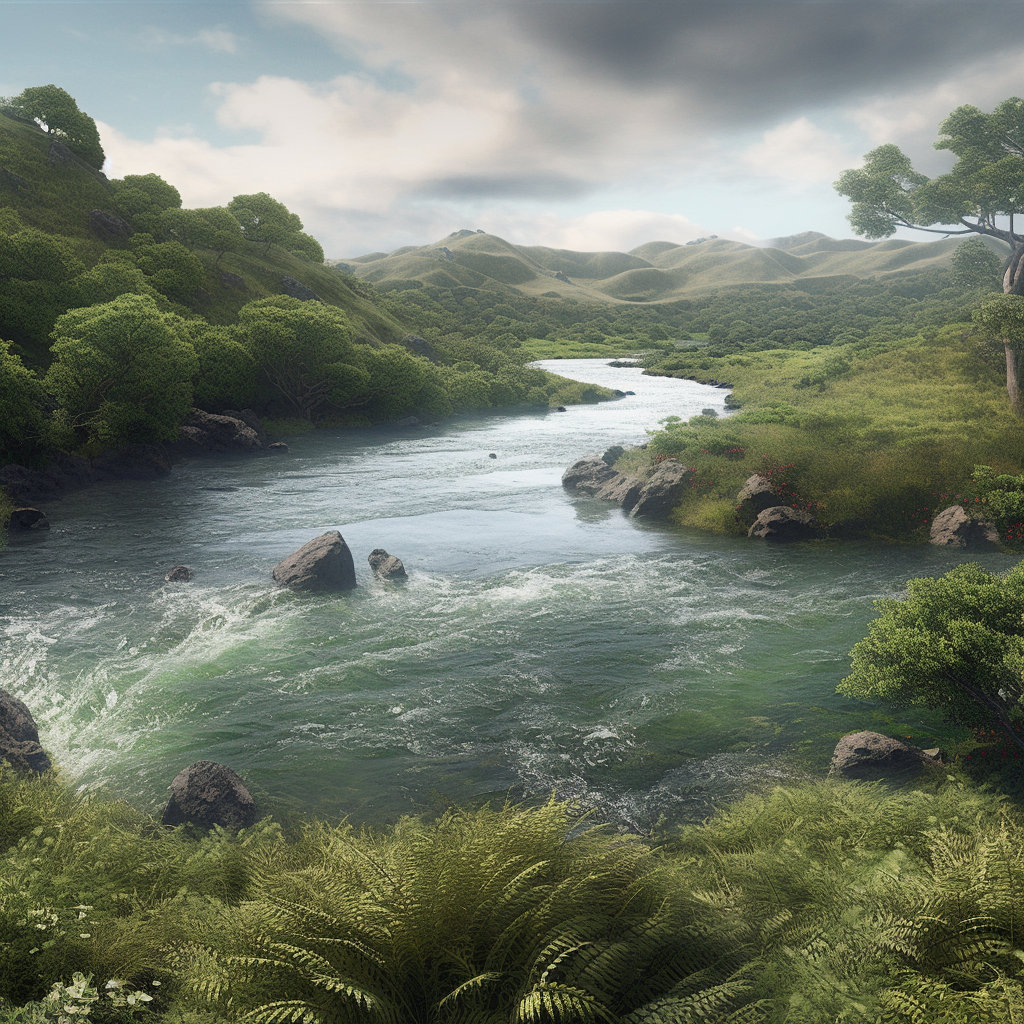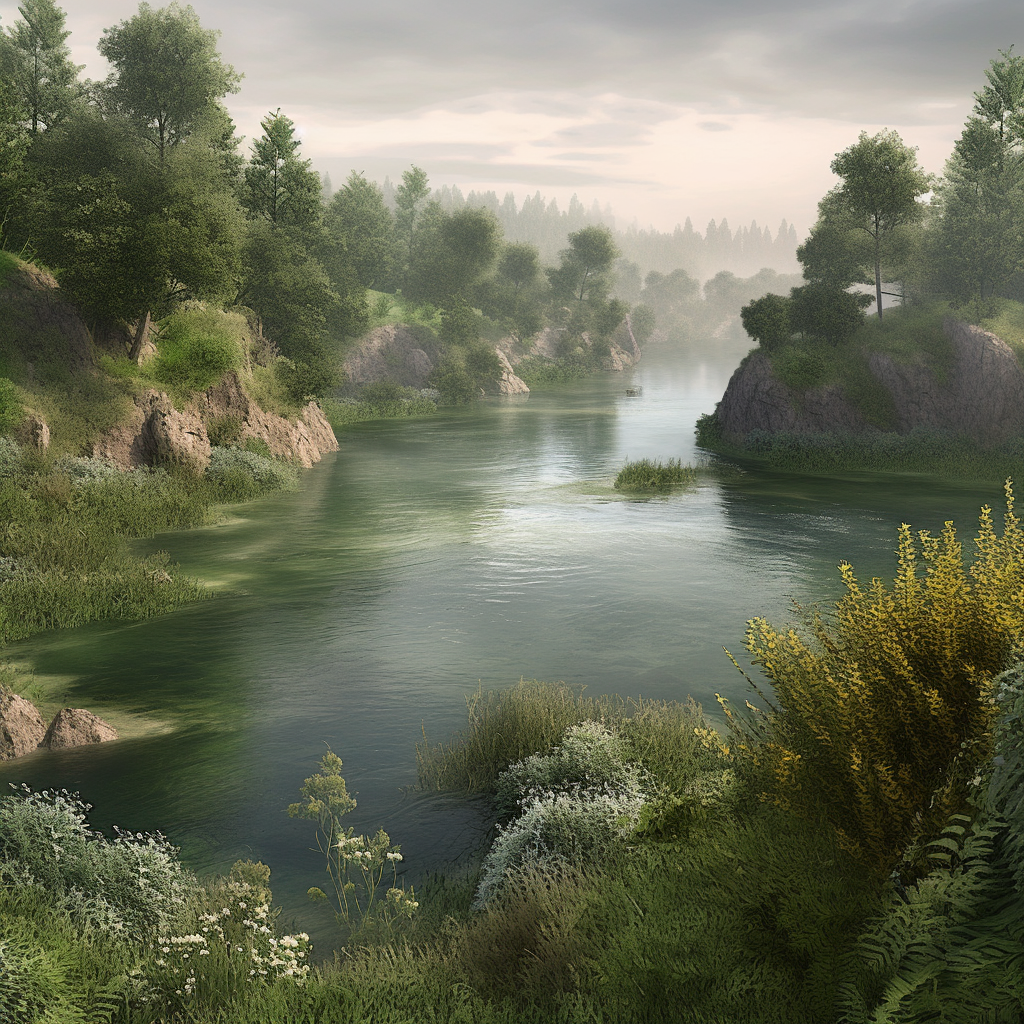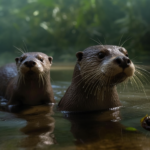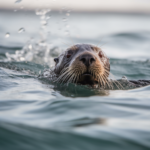River Otter Territory
The territory of river otters is a fascinating subject to explore. These playful and intelligent creatures can be found in various regions across the globe, including North America, Europe, and Asia. River otters are well-adapted to their aquatic habitats, with their streamlined bodies, webbed feet, and dense fur that keeps them warm in the water. They are highly skilled swimmers and can dive to great depths in search of food. In this article, we will delve into the different aspects of river otter territory, including their preferred habitats, distribution, and behavior. So, let’s dive in and discover more about these delightful creatures and the territories they call home.
Key Takeaways
- River otters have a wide range of territory, including rivers, lakes, and coastal areas.
- They are highly adaptable and can be found in both freshwater and saltwater environments.
- River otters are excellent swimmers and use their strong tails and webbed feet to navigate through water.
- They are carnivorous and primarily feed on fish, but also consume amphibians, crustaceans, and small mammals.
- River otters play a vital role in maintaining the health of aquatic ecosystems by controlling populations of prey species.
- Conservation efforts are important to protect river otter habitat and ensure their long-term survival.
The River Otter: A Brief Overview
A. What Does a River Otter Look Like?
River otters are fascinating creatures that inhabit various river ecosystems around the world. They belong to the family of aquatic mammals and are known for their playful nature and sleek appearance. Let’s take a closer look at what sets these otters apart.
Physical Characteristics:
- Size: River otters are medium-sized mammals, measuring around 3 to 4 feet in length, including their tail. They typically weigh between 10 to 30 pounds.
- Fur: Their fur is dense and waterproof, providing insulation and allowing them to stay warm in cold water. The color of their fur can vary, ranging from dark brown to almost black.
- Body Shape: River otters have a streamlined body shape, ideal for swimming. Their long, muscular tail helps them navigate through the water with ease.
- Webbed Feet: Their feet are equipped with webbing, which enables them to swim swiftly and efficiently. On land, they can retract their webbing, revealing sharp claws for better traction.
Distinctive Features:
- Face: River otters have a small, rounded head with a blunt nose. Their eyes are located on the sides of their head, allowing them to have a wide field of vision.
- Ears: Their ears are small and rounded, positioned on the sides of their head. This placement helps them hear both in and out of the water.
- Whiskers: Otters have long, sensitive whiskers called vibrissae. These whiskers aid in detecting prey and navigating their surroundings.
B. Where Are River Otters Located?
River otters can be found in various regions across the globe, primarily in freshwater habitats such as rivers, lakes, and wetlands. Let’s explore some of the locations where these fascinating creatures reside.
North America:
- North American River Otter: This species of otter is native to North America and can be found throughout the continent. They inhabit rivers, lakes, and coastal areas, from Alaska and Canada to Mexico.
- River Otters in the United States: In the United States, river otters can be found in many states, including California, Oregon, Washington, Florida, and Louisiana. They thrive in both freshwater and marine environments.
Europe:
- European Otter: The European otter is found in various countries across Europe, including the United Kingdom, France, Germany, and Norway. They prefer freshwater habitats such as rivers, streams, and lakes.
Asia:
- Asian Small-Clawed Otter: This otter species is native to Southeast Asia and can be found in countries like India, China, and Indonesia. They inhabit both freshwater and coastal areas.
South America:
- Neotropical Otter: The neotropical otter is found in South America, particularly in countries like Brazil, Peru, and Argentina. They inhabit rivers, streams, and wetlands in the region.
C. How Many River Otters Are Left in the World?
The population of river otters varies across different regions, and it can be challenging to determine the exact number of individuals. However, efforts have been made to estimate their population and monitor their conservation status.
Conservation Status:
- North American River Otter: The North American river otter is listed as a species of “Least Concern” by the International Union for Conservation of Nature (IUCN). This indicates that their population is relatively stable.
- European Otter: The European otter, on the other hand, has faced significant declines in the past due to habitat loss and pollution. However, conservation efforts have helped stabilize their population in some regions.
- Asian Small-Clawed Otter: The Asian small-clawed otter is currently listed as a species of “Vulnerable” by the IUCN. Their population has been declining due to habitat destruction and illegal wildlife trade.
- Neotropical Otter: The neotropical otter is also listed as a species of “Least Concern” by the IUCN. However, localized declines have been observed in some areas due to habitat degradation and pollution.
While the exact number of river otters worldwide is difficult to determine, ongoing conservation efforts aim to protect their habitats and ensure their long-term survival. By raising awareness and implementing conservation measures, we can help preserve these remarkable creatures for future generations to enjoy.
Understanding the River Otter Habitat

The habitat of river otters plays a crucial role in their survival and overall well-being. In this section, we will explore the different aspects of river otter habitat, including their description, variations in habitat across different regions, their niche within the ecosystem, interesting facts about their habitat, and even a map showcasing their range.
A. River Otter Habitat Description
River otters are semi-aquatic mammals that primarily inhabit freshwater ecosystems such as rivers, lakes, and wetlands. They are well-adapted to their aquatic lifestyle, with streamlined bodies, webbed feet, and a thick, water-repellent coat that helps them stay warm and buoyant in the water.
These playful creatures are found in various regions across North America, including Florida and Minnesota, where they have adapted to the specific characteristics of their local habitats.
B. River Otter Habitat in Florida
In Florida, river otters can be found in a variety of habitats, including rivers, streams, marshes, and coastal areas. They are particularly abundant in the state‘s extensive network of freshwater springs, which provide a constant source of clean water and abundant food.
The warm climate of Florida allows river otters to thrive year-round, and they are often observed swimming, diving, and playing in the water. The diverse vegetation and abundant prey species in Florida’s habitats make it an ideal home for these charismatic creatures.
C. River Otter Habitat in Minnesota
In contrast to the warm and coastal environment of Florida, river otters in Minnesota have adapted to the colder climate and freshwater ecosystems found in the state. They can be found in lakes, rivers, and wetlands throughout Minnesota, including the famous Boundary Waters Canoe Area Wilderness.
The dense forests and pristine waterways of Minnesota provide ample opportunities for river otters to establish their territories and find food. These habitats are also home to a variety of fish, amphibians, and invertebrates, which serve as the primary food source for these voracious hunters.
D. River Otter Habitat and Niche
River otters play a vital role in maintaining the health of river ecosystems. As top predators, they help regulate the populations of their prey species, preventing overpopulation and ensuring a balanced ecosystem. Their presence also indicates the overall health of the waterways they inhabit.
Within their habitats, river otters establish territories and mark them with scent to communicate their presence to other otters. These territories often overlap with the territories of other otters, leading to occasional territorial disputes.
E. River Otter Habitat Facts
Here are some fascinating facts about river otter habitats:
- River otters are highly adaptable and can thrive in a wide range of aquatic environments, from coastal areas to inland waterways.
- They are excellent swimmers and can dive up to 60 feet underwater in search of food.
- River otters are social animals and often live in family groups, with a dominant breeding pair and their offspring.
- During the mating season, river otters can travel long distances to find suitable mates.
- They build their dens in riverbanks, hollow logs, or other secluded areas near the water, providing a safe haven for raising their young.
F. River Otter Habitat Map
To get a better understanding of the range of river otters in North America, take a look at the map below:
[Insert River Otter Habitat Map]
This map showcases the distribution of river otters across different regions, highlighting the areas where they are most commonly found. It is important to note that river otter populations can vary within these regions, influenced by factors such as habitat quality and human impact.
By understanding the diverse habitats that river otters occupy, we can appreciate the importance of conserving these environments and ensuring the long-term survival of these fascinating creatures.
The River Otter Diet: What Fuels the Otter?

A. River Otter Habitat and Food
River otters are fascinating creatures that inhabit various freshwater ecosystems across North America. These aquatic mammals are known for their playful behavior, territorial marking, and unique social structure. But have you ever wondered what fuels these otters and keeps them thriving in their natural habitat?
The river otter’s diet is diverse and well-adapted to its environment. These otters are opportunistic feeders, meaning they will eat whatever is readily available in their surroundings. Their diet primarily consists of fish, amphibians, crustaceans, and even small mammals. They are skilled hunters, capable of catching fast-swimming fish with their sharp teeth and agile bodies.
B. River Otter Habitat and Diet
River otters are highly adaptable and can be found in a wide range of habitats, including rivers, lakes, marshes, and coastal areas. They prefer areas with abundant vegetation and ample food sources. These habitats provide the otters with the perfect environment to hunt and thrive.
The otter’s diet varies depending on its location and the availability of prey. In river ecosystems, they primarily feed on fish such as trout, salmon, and catfish. In marshy areas, they may consume frogs, turtles, and crayfish. Coastal otters have a more diverse diet, including shellfish like crabs and clams.
C. What Do River Otters Eat?
River otters have a varied diet, and their food preferences can vary depending on the season and location. Here are some common food items that make up the otter’s diet:
-
Fish: Fish make up a significant portion of the otter’s diet. They are skilled hunters and can catch fish with precision. Their favorites include trout, salmon, bass, and perch.
-
Amphibians: Otters also feed on amphibians such as frogs and salamanders. They are particularly fond of small, aquatic frogs that are abundant in their habitats.
-
Crustaceans: Crayfish and crabs are another favorite food source for otters. These crustaceans provide a good source of protein and are abundant in many freshwater ecosystems.
-
Small Mammals: Although not as common, otters may occasionally prey on small mammals like muskrats and voles. These opportunistic feeders will seize the opportunity if a small mammal presents itself as an easy meal.
D. What Does River Otter Taste Like?
While it is not common for humans to consume river otters, some indigenous communities have historically hunted otters for their meat and fur. The taste of otter meat is often described as similar to other game meats, such as rabbit or venison. However, it is important to note that hunting river otters is regulated, and in many areas, it is illegal to hunt or consume them.
In conclusion, the river otter‘s diet is diverse and well-suited to its habitat. These adaptable creatures are skilled hunters and feed on a variety of fish, amphibians, crustaceans, and occasionally small mammals. While their diet may vary depending on their location and the availability of prey, otters are opportunistic feeders that make the most of their surroundings.
River Otter Territory: A Closer Look
A. North American River Otter Territory
The North American river otter, scientifically known as Lontra canadensis, is a fascinating aquatic mammal that inhabits various river systems across North America. These charismatic creatures have captured the hearts of many nature enthusiasts with their playful behavior and remarkable adaptability.
River otters are highly territorial animals, establishing their own distinct areas of occupancy within river ecosystems. Their territory serves as their home range, providing them with ample resources for survival. Within this territory, otters engage in a range of activities, including hunting, mating, and raising their young.
B. Where Does the Otter Tail River Start?
One of the notable river systems where river otters can be found is the Otter Tail River. This river, located in the state of Minnesota, is named after the river otter due to its historical abundance in the area. The Otter Tail River begins in Otter Tail County and flows for approximately 192 miles before joining the Red River of the North.
The Otter Tail River is characterized by its diverse habitat, including stretches of fast-flowing water, calm pools, and meandering channels. These varying conditions provide the perfect environment for river otters to thrive, offering an abundance of food sources such as fish, amphibians, and crustaceans.
C. River Otter Territory Size
The size of a river otter’s territory can vary depending on several factors, including the availability of resources and the density of the otter population. On average, a river otter’s territory can range from 2 to 50 square miles, although it can be even larger in some cases.
The size of the territory is crucial for the otter’s survival, as it ensures access to an adequate food supply and suitable denning sites. Otters are known to mark their territory using scent glands, leaving behind distinct scents to communicate with other otters and deter potential intruders.
D. River Otter Territory Map
To visualize the distribution of river otter territories, researchers often create maps that highlight the areas where otters are known to reside. These maps provide valuable insights into the range and habitat preferences of river otters, aiding in conservation efforts and management strategies.
River otter territory maps typically depict the rivers, lakes, and wetlands where otters are commonly found. They also indicate the boundaries of individual otter territories and the overlapping areas where otters may interact with one another. These maps are essential tools for understanding the spatial dynamics of otter populations and identifying areas of conservation concern.
In conclusion, river otters have a well-defined territory within river ecosystems, such as the Otter Tail River. The size of their territory can vary, but it is crucial for their survival and includes hunting grounds, den locations, and mating areas. By studying and mapping river otter territories, researchers can gain a better understanding of these fascinating creatures and implement effective conservation measures to protect their habitats.
The Importance of River Otters in the Ecosystem
River otters play a crucial role in maintaining the balance of river ecosystems. These charismatic aquatic mammals are known for their playful behavior and territorial nature. Let’s explore why river otters are important and how they contribute to the overall health of the environment.
A. Why Are River Otters Important?
River otters are not just adorable creatures; they serve a vital purpose in the ecosystem. Here are a few reasons why river otters are important:
-
Indicator Species: River otters are considered an indicator species, meaning their presence or absence can indicate the overall health of an ecosystem. If river otters thrive in a particular area, it suggests that the water quality is good, and the ecosystem is in balance.
-
Keystone Predators: River otters are skilled hunters and play a crucial role as keystone predators. By regulating the populations of their prey, such as fish, crayfish, and amphibians, otters help maintain the biodiversity of the ecosystem. They prevent certain species from becoming overpopulated, which can have detrimental effects on the ecosystem.
-
Nutrient Cycling: River otters contribute to nutrient cycling in river ecosystems. When otters consume prey, they excrete waste that contains essential nutrients. This waste enriches the water and surrounding vegetation, benefiting other organisms in the ecosystem.
B. Why Are River Otters Important to the Ecosystem?
River otters have a significant impact on the overall health and functioning of river ecosystems. Here’s why they are important to the ecosystem:
-
Controlling Prey Populations: As top predators, river otters help control the populations of their prey. By keeping prey populations in check, otters prevent overgrazing and ensure the survival of various plant and animal species within the ecosystem.
-
Maintaining Biodiversity: River otters contribute to the overall biodiversity of river ecosystems. By regulating the populations of their prey, they create a balanced environment where multiple species can coexist. This biodiversity is essential for the stability and resilience of the ecosystem.
-
Improving Water Quality: River otters are sensitive to changes in water quality. Their presence indicates that the water is clean and suitable for their survival. By maintaining a healthy population of otters, we indirectly ensure the preservation of clean water sources, benefiting other aquatic organisms and human communities.
C. How Do River Otters Help the Environment?
River otters have several ways in which they help the environment thrive:
-
Seed Dispersal: River otters consume a variety of prey, including fish and amphibians. As they move through the ecosystem, otters inadvertently disperse seeds from the plants and fruits they consume. This helps with the regeneration and dispersal of plant species, contributing to the overall biodiversity of the environment.
-
Creating Habitat: River otters are known to create dens along riverbanks, which provide shelter for themselves and other species. These dens also help stabilize the riverbanks, preventing erosion and maintaining the integrity of the ecosystem.
-
Educational and Recreational Value: River otters have significant educational and recreational value. Their playful behavior and charismatic nature make them popular attractions for wildlife enthusiasts and tourists. This, in turn, raises awareness about the importance of conserving river ecosystems and the need to protect otter populations.
In conclusion, river otters are not only adorable creatures but also essential contributors to the health and balance of river ecosystems. Their presence indicates a thriving environment, and their role as keystone predators helps maintain biodiversity and regulate prey populations. By understanding and appreciating the importance of river otters, we can work towards their conservation and the preservation of their habitats.
River Otters: Defense and Protection

River otters are fascinating creatures that inhabit various river ecosystems across North America. These agile and playful aquatic mammals have developed several strategies to defend themselves and protect their territory. Let’s explore how river otters ensure their safety in their natural habitat.
A. How Do River Otters Protect Themselves?
River otters employ a range of techniques to safeguard themselves from potential threats. Here are some ways they protect themselves:
-
Camouflage: River otters have dense, waterproof fur that helps them blend seamlessly into their surroundings. Their fur acts as an insulating layer, keeping them warm and providing excellent camouflage while they swim or rest along the riverbanks.
-
Agility and Speed: River otters are incredibly agile swimmers. They can swiftly navigate through the water, making it difficult for predators to catch them. With their streamlined bodies and powerful tails, they can reach impressive speeds, enabling them to escape from danger.
-
Alertness: River otters have keen senses, including sharp eyesight and acute hearing. They remain vigilant, constantly scanning their environment for any signs of danger. This heightened awareness allows them to react quickly and evade potential threats.
-
Group Living: River otters often form social groups, known as “family groups,” which provide additional protection. By living in close-knit family units, they can watch out for each other and collectively defend against predators. This cooperative behavior enhances their chances of survival.
B. How Do River Otters Defend Themselves?
In addition to protective measures, river otters also have defensive strategies to ward off potential threats. Here are some ways they defend themselves:
-
Territorial Marking: River otters mark their territory by leaving scent markings, called “spraints,” in prominent locations. These spraints contain a unique scent that communicates the otter’s presence and warns other otters to stay away. By establishing and defending their territory, river otters reduce the likelihood of encountering unfamiliar or potentially aggressive individuals.
-
Territorial Disputes: When two river otters from different territories come into contact, territorial disputes may arise. These disputes involve vocalizations, posturing, and sometimes physical confrontations. By defending their territory, river otters assert their dominance and protect their resources, ensuring their survival and the well-being of their family group.
-
Escape Techniques: If a river otter feels threatened or cornered, it may resort to various escape techniques. These include diving underwater, using their powerful tails to propel themselves away, or seeking refuge in dense vegetation or burrows. By utilizing these escape strategies, river otters increase their chances of evading predators and staying safe.
-
Mating Season: During the mating season, river otters become more territorial and protective. Males may engage in aggressive behaviors to establish dominance and secure mating rights. This heightened aggression serves as a defense mechanism, ensuring the survival of their genes and the continuation of their species.
In conclusion, river otters have evolved remarkable defense and protection mechanisms to thrive in their habitat. Their ability to camouflage, their agility and speed, and their alertness contribute to their survival. Additionally, their social structure, territorial marking, and defensive behaviors help them ward off potential threats. By understanding these strategies, we can appreciate the resilience and adaptability of these fascinating creatures.
The Plight of the River Otter
A. Why Are River Otters Endangered?
River otters, those playful and charismatic aquatic mammals, are unfortunately facing numerous challenges that have led to their endangered status. These challenges primarily stem from human activities and the degradation of their natural habitat.
One of the main reasons why river otters are endangered is the loss and fragmentation of their habitat. As human populations expand and encroach upon river ecosystems, otter habitat is destroyed or altered, leaving these creatures with limited space to thrive. Deforestation, urbanization, and the construction of dams are all contributing factors to the loss of suitable otter habitats.
Pollution is another significant threat to river otters. Chemical runoff from agricultural practices, industrial waste, and oil spills can contaminate the waterways that otters rely on for survival. These pollutants not only degrade the quality of the water, but they also accumulate in the otters‘ food chain, leading to detrimental health effects and reproductive issues.
Overfishing and the depletion of fish populations also impact river otters. As otters primarily feed on fish, a decline in fish numbers directly affects their ability to find sufficient food. Additionally, competition with commercial fisheries further exacerbates the scarcity of prey for otters.
B. How Many River Otters Are in the World?
Estimating the global population of river otters is a challenging task due to their wide distribution across various continents. However, it is believed that there are several thousand river otters worldwide.
The North American river otter (Lontra canadensis) is the most well-known and extensively studied otter species. In North America alone, it is estimated that there are tens of thousands of river otters. These otters inhabit freshwater ecosystems such as rivers, lakes, and wetlands, and are found in regions spanning from Canada to Mexico.
In addition to North America, river otters can also be found in other parts of the world. For example, the Eurasian otter (Lutra lutra) inhabits Europe and parts of Asia, while the giant otter (Pteronura brasiliensis) resides in South America. Each of these otter species has its own unique habitat requirements and population sizes.
Efforts to monitor and track river otter populations are ongoing, with researchers using various methods such as camera traps, field surveys, and genetic analysis. These studies help scientists gain a better understanding of otter populations and inform conservation strategies to protect these remarkable creatures.
In conclusion, the plight of river otters is a result of habitat loss, pollution, overfishing, and other human-induced factors. While the exact global population of river otters is difficult to determine, it is clear that their numbers have decreased significantly, warranting conservation efforts to ensure their survival. By addressing the threats they face and implementing measures to protect their habitats, we can help secure a brighter future for these fascinating and vital members of our river ecosystems.
River Otter Habitat Diorama: A Visual Representation
River otters are fascinating creatures that inhabit various water bodies across North America. To better understand their habitat and behavior, creating a river otter habitat diorama can provide a visual representation of their natural environment. This diorama can showcase the different elements that make up the river otter‘s territory, allowing us to appreciate the intricate balance of their ecosystem.
Designing the Diorama
When designing a river otter habitat diorama, it’s essential to consider the key components that contribute to their territory. These components include water bodies, vegetation, prey species, and potential den locations. By incorporating these elements into the diorama, we can create a realistic representation of the river otter‘s habitat.
Water Bodies
Water bodies are crucial for river otters, as they are semi-aquatic mammals. Including a flowing river or a calm lake in the diorama can highlight the otter’s affinity for water. You can use blue-colored materials to represent the water, adding texture and depth to create a realistic effect. Additionally, consider incorporating rocks and pebbles along the water’s edge to mimic the otter’s preferred resting spots.
Vegetation
Vegetation plays a vital role in the river otter‘s habitat, providing cover, nesting sites, and food sources. Including various types of aquatic plants, such as water lilies, cattails, and reeds, can enhance the diorama’s authenticity. These plants can be made using craft materials or purchased from hobby stores. Placing them strategically around the water bodies will create a sense of realism and showcase the otter’s natural environment.
Prey Species
River otters primarily feed on fish, amphibians, crustaceans, and small mammals. To depict the otter’s feeding habits, consider adding miniature replicas of these prey species to the diorama. You can use small plastic or clay models to represent fish, frogs, crayfish, and other potential food sources. Positioning these replicas near the water bodies will demonstrate the otter’s hunting grounds and highlight their role as top predators in the ecosystem.
Den Locations
River otters are known to establish dens along the banks of rivers, lakes, or marshes. These dens provide shelter and protection for the otters and their offspring. Including a den in the diorama can showcase the otter’s nesting behavior. You can create a den using natural materials such as twigs, leaves, and small rocks. Placing it near the water bodies will emphasize the otter’s close proximity to their preferred habitat.
Benefits of a River Otter Habitat Diorama
Creating a river otter habitat diorama offers several benefits. Firstly, it allows us to appreciate the complexity of the otter’s territory and the interconnectedness of the various elements within it. By visually representing their habitat, we gain a deeper understanding of the otter’s behavior and the importance of preserving their environment.
Secondly, a diorama can serve as an educational tool, especially for children and students. It provides a hands-on learning experience that helps them grasp the concept of ecosystems, food chains, and the role of different species within them. By observing the diorama, they can learn about the otter’s habitat, feeding habits, and the importance of conservation efforts.
Lastly, a river otter habitat diorama can be a source of inspiration for conservationists and researchers. It can spark curiosity and encourage further exploration into the otter’s behavior, population dynamics, and environmental impact. By studying the diorama, scientists can gain insights into the otter’s territorial behavior, social structure, and the potential effects of human activities on their habitat.
In conclusion, a river otter habitat diorama provides a visual representation of the otter’s natural environment, showcasing the key components of their territory. By incorporating water bodies, vegetation, prey species, and den locations, we can create a realistic depiction of the otter’s habitat. This diorama serves as an educational tool, fostering a deeper understanding of the otter’s behavior and the importance of conserving their ecosystem.
Conclusion
In conclusion, river otters are fascinating creatures that inhabit a wide range of territories across North America. They are highly adaptable and can be found in various aquatic habitats, including rivers, lakes, marshes, and coastal areas. River otters are excellent swimmers and are well-equipped to thrive in their watery environments. They play a crucial role in maintaining the ecological balance of their habitats by controlling populations of prey species and serving as indicators of environmental health. Despite facing some challenges, such as habitat loss and pollution, efforts are being made to conserve and protect river otter populations. By understanding their territories and implementing conservation measures, we can ensure the continued survival and well-being of these remarkable animals for generations to come.
Frequently Asked Questions
1. What is a river otter habitat description?
River otters are semi-aquatic mammals that inhabit a variety of environments. They are commonly found in freshwater environments like rivers, lakes, and marshes. Their habitats are usually surrounded by vegetation for cover and have access to a steady food supply. River otters typically live in dens, also known as ‘holts’, which are often burrows dug by other animals, or natural hollows.
2. How do river otters protect themselves?
River otters protect themselves using a combination of their sharp teeth, strong jaws, and agile bodies. They are excellent swimmers which allows them to escape from predators in the water. They also use their keen sense of sight, smell, and hearing to detect threats.
3. Why are river otters important to the ecosystem?
River otters play a crucial role in maintaining the health of the ecosystem. They help control the population of certain species, like fish and crustaceans, preventing overpopulation. Their feeding habits also help in the distribution of nutrients within the water bodies they inhabit.
4. Where does the Otter Tail River start?
The Otter Tail River begins at Elbow Lake in Becker County, Minnesota. It flows through several lakes and towns before merging with the Bois de Sioux River at Wahpeton, North Dakota and Breckenridge, Minnesota to form the Red River of the North.
5. What does a river otter look like?
River otters are sleek, streamlined animals with a long, tapered tail. They have short legs, webbed feet for swimming, and a dense, waterproof fur coat. Their color ranges from brown to black, and they have a lighter, silvery shade on their undersides.
6. How many river otters are left in the world?
The exact number of river otters left in the world is unknown due to their wide distribution and elusive nature. However, the North American river otter population is estimated to be in the hundreds of thousands. Their populations are stable in many areas but are declining in others due to habitat loss and pollution.
7. What do river otters eat?
River otters are carnivorous and their diet primarily consists of fish. However, they are opportunistic feeders and also consume various amphibians, crustaceans, and sometimes small mammals and birds.
8. How do river otters help the environment?
River otters contribute to the health of the environment in several ways. They help maintain balance in aquatic ecosystems by controlling the population of certain species. Their foraging behavior also aids in the distribution of nutrients in the water bodies they inhabit.
9. What is the territory size of a river otter?
The territory size of a river otter can vary greatly depending on the availability of food and shelter. On average, a male’s territory may encompass 3 to 15 square miles, while a female’s territory is usually smaller.
10. Why are river otters endangered?
River otters are not globally endangered, but some local populations are at risk due to factors like habitat loss, water pollution, illegal trapping, and human disturbance. Conservation efforts are ongoing to protect and preserve these important aquatic mammals.




